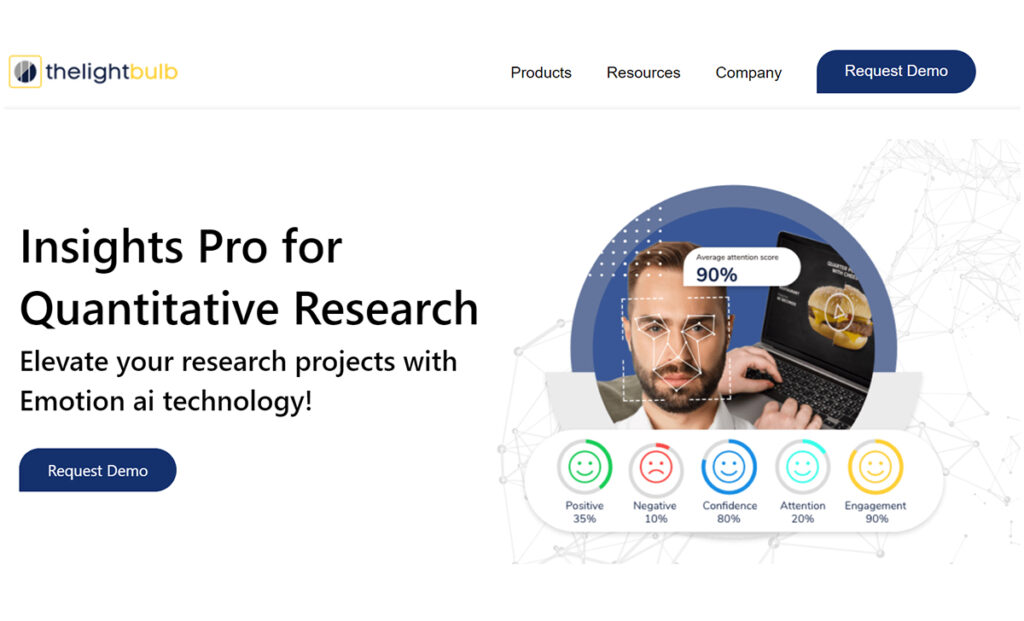
As ardent AI proponents we have meticulously explored multiple angles of how AI can enhance market research. From facial coding use cases and applications to using emotion AI with facial coding for market research, we have detailed extracts on each one of them. And although AI has had a profound impact on the market research industry as a whole, there are certain challenges that have proven to be major roadblocks to AI adoption in this space.

The impact and utility of AI tools in the market research space cannot be overstated. But, truth be told, AI is not for every market research avenue. There are specific areas that must align for you to see a positive impact on your research output with AI.
Our goal today is to offer an introduction to certain factors that must be assessed before picking FACS for market research. The interesting thing to notice here is how these factors seem discrete and yet are so deeply connected. The causality of the relationship is a contributing factor to the efficacy of AI tools in market research efforts and one needs to understand these relationships before investing in FACS.
Factors You Should Consider Before Turning to FACS
Where some of these factors dictate the eligibility to use FACS, others simply tell you whether or not FACS will add to the quality of the output. Because one needs to consider both before diving into research and expecting unrealistic results.

-
Level of Consent
Both qualitative and quantitative research involves using varied methods of collecting insights based on the level of consent and the type of research participants. By level of consent, we’re referring to the levels of comfort research participants have when it comes to being recorded in a session.
Where some participants are comfortable being recorded visually, some might object to this and may only allow for their audio to be recorded for the research. There might even be people who would appreciate not being recorded at all and offer their responses verbally or through text.
FACS operates on visual inputs like pre-recorded sessions of participants interacting with a product, live interactions with digital products, or recorded interviews. Moreover, there are jurisdictions where using recording of participants without consent for research is illegal and carries a heavy penalty. So before you go ahead and pick FACS for your research initiatives, ask the research participants whether or not they’re comfortable with being recorded visually, and if using those recordings for research is permissible in your area.
-
Research Avenue
Not every research avenue is FACS-friendly. What we mean by this is, researchers employ different tools based on their end goal and the target demographics. Now, where some of these tools can be improvised to give audiovisual outputs, for others it doesn’t make much sense. For instance, a survey or a one-on-one interview where an interviewer engages verbally with the research participants, it makes sense to employ FACS, since there will be visual cues. Same is true for product interactions, or ad-testing initiatives, where different elements elicit different emotions.
However, for research avenues where the insights received are in the form of text, FACS won’t be of much help. So one needs to be sure of the research avenue and the kind of insights they’re looking for at the end of the program before they go ahead and give the green light to FACS.
What researchers are trying to achieve using FACS is to get a window into the emotional aspects of consumer decision making and to understand what kind of emotions, when triggered, ultimately lead to a desired outcome. Researchers can use, what is called, text sentiment analysis instead to extract emotional insights from text-based data.
-
Adaptability
FACS, text sentiment analysis, eye tracking, voice transcription and processing are all units of AI that have been integrated into market research methodologies after AI took off and set examples in multiple other industries like automation, engineering, and manufacturing. And like every other industry, groups that made the shift from conventional market research avenues to the new AI-based research tools had to go through a transformation.
They had to learn how these tools work and how to use them to get the best possible results. For instance, there are two ways you can employ FACS in your research project.
- With the help of a facial coding expert who knows how to create machine learning models that can identify and demarcate different emotions.
- By using dedicated market research tools that have inbuilt FACS functionalities
And regardless of which route you pick, there will be substantial changes in terms of training and familiarising teams with the new digital infrastructure. Integrating AI-based softwares with existing market research toolsets and using them as beginners may prove to be a significant challenge even for the most seasoned veterans.
However, there are exceptions when it comes to AI-based market research tools. Insights Pro, Lightbulb’s premier market research tool, has one of the most beginner-friendly UI that lets you analyse pre-recorded or live interactions with just a few clicks. It also has a dedicated dashboard for centralised access to all the insights. You can explore the tool in more detail here.
-
Associated Costs
Integrating new age research methodologies involves costs, and we’re not just talking about money here. Sure, developing and integrating an in-house FACS tool entails a significant cost, but it takes more time than money to finally get the ball rolling. Hiring a development team, and a group of AI experts, developing the model, testing it, integrating it with the existing toolset, and finally training the team to get optimal results from the model. Although we can vouch for our product and guarantee that the return of your investment will be higher than you would expect.
Using dedicated AI-based FACS tools (Like Insights Pro) can help save time and resources, but that too comes with a monthly subscription plan. So if you’re actually considering using FACS for your next market research project, analyse your budget and then decide whether or not the investment is worth it.
-
The End Goal
We’ve established that FACS is extremely potent and can help extract hidden insights from data that finally translate to better decisions at the stakeholder level.
But what if your end goal is simple can be achieved using conventional market research tools?
What if the kind of answers you’re looking for can easily be answered with simple research?
You don’t have to complicate things when you can get what you want with much less effort. FACS is more useful for research projects that try to answer qualitative questions like-
How likely are consumers to click on a certain element on a webpage?
What is the likelihood that consumers will buy a certain product just by looking at the packaging?
So unless your research doesn’t go as deep, you can skip AI-based market research methodologies and stick to the good old ways.
Conclusion:
While FACS offers promising opportunities for enhancing market research, it’s essential to consider various factors before implementation. From consent levels to adaptability and associated costs, each aspect plays a crucial role in determining the desired impact on outcome. With Insights Pro, you get access to a suite of powerful AI-based market research tools that can take a regular market research study, analyse it, and make it richer in terms of actual actionable insights.

Insights Pro helps users tap into the unmatched potential of emotion AI without having to manually pick what parts of the technology to use. We have separate tools for both qualitative and quantitative research that can be used for analysing both live and recorded interactions. It automatically picks the right group of technologies based on the mode of survey and deploys them for the best possible results.









